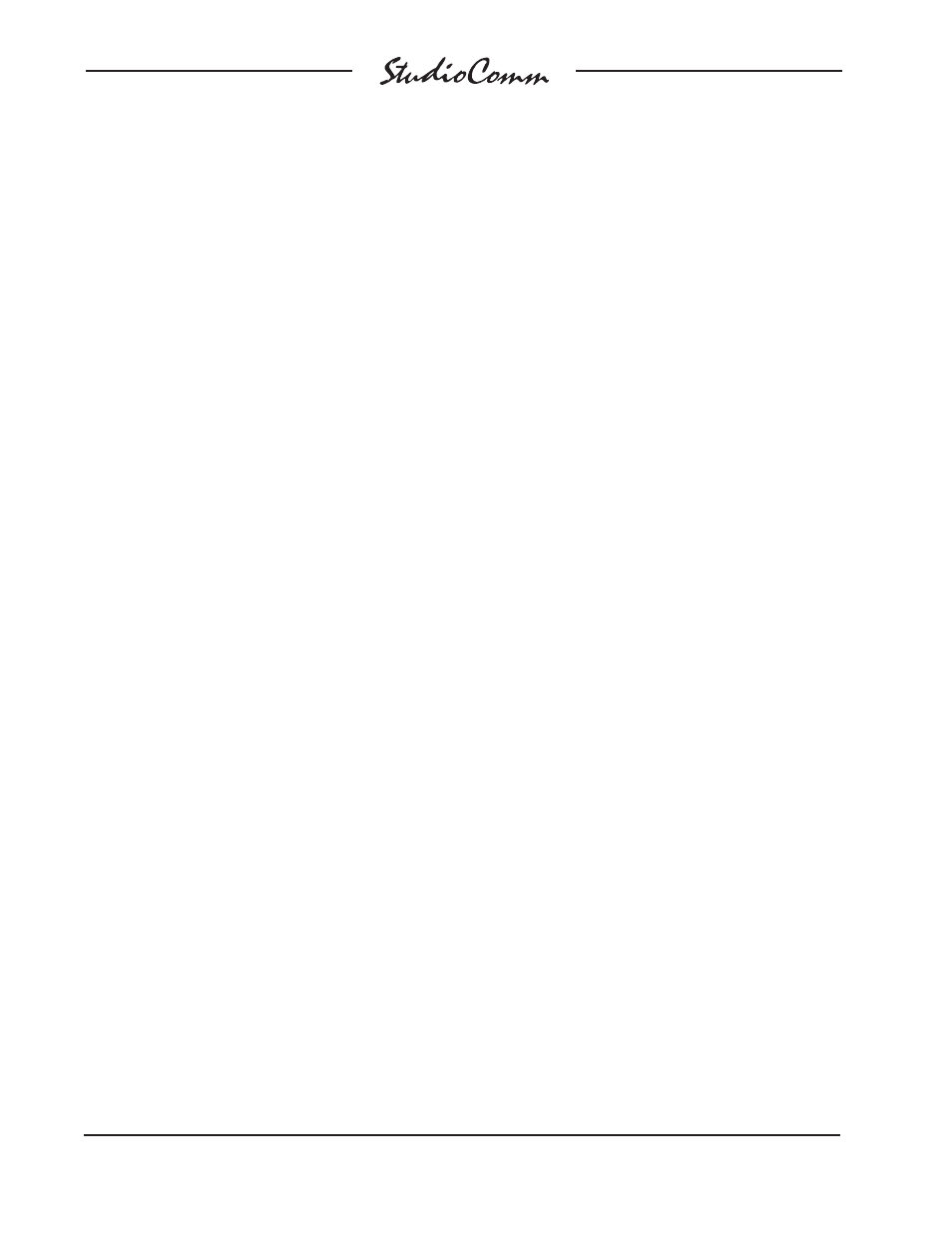Studio Technologies 76DBA V.3.00 User Manual
Page 40

Issue 1, November 2010
Model 76DBA/77B User Guide
Page 40
Studio Technologies, Inc.
for Surround
being set by the rotary level control or by
the reference level button. The LED associ-
ated with the dim button will light whenever
dim is active. If dim mode is enabled via
the remote dim function the dim LED will
flash.
It’s worth using a few sentences to discuss
the auto dim off function. Whenever dim
is enabled due to the dim button being
pressed, and the rotary level control is
active (reference level mode is not active),
changing the setting of the rotary level
control will automatically turn off dim. The
auto dim off function is a unique attempt
at protecting the aural health of users. No
longer will there be a heart-stopping blast
of audio when the dim button is pressed,
supposedly to enable dim, but actually
turning dim off because it was already
enabled. It’s hard to explain unless you’ve
experienced this in person—trust us, this
situation can and does happen!
Note that the auto dim off function is not
active whenever dim is enabled due to
the remote dim function being active. This
allows remote control equipment, such
as a talkback system, to reliably dim the
monitor outputs.
Dialnorm Enable
Enabling the dialnorm level function sim-
ply requires pressing the dialnorm enable
button. The button provides a “latching”
function so that the selected state is
maintained. An associated LED will light
whenever the function is active. The dial-
norm enable function can only be activated
when the selected input source is the sur-
round signal that has been configured as
having dialnorm associated with it. (This
is because dialnorm level data is avail-
able only for that specific source.) When
enabled, as the dialnorm level changes
the post-fader surround digital and analog
monitor output levels will automatically
increase or decrease as appropriate. Dur-
ing configuration of the system a dialnorm
reference level was entered. This level,
typically in the range of –27 to –24 dB, is
compared to the incoming dialnorm level
value. If the current dialnorm level is less
than the reference value the output level is
increased by the difference. If the current
dialnorm level is greater than the reference
value the output level is decreased, again
by the difference. Note that dialnorm lev-
els are limited to a range of –31 to –1 dB.
This restricts the maximum amount of level
control to 30 dB.
The 4-digit display, when selected for
output level display mode, will display all
level changes as they occur, including
level changes due to dialnorm activity. The
current dialnorm level value can itself be
viewed by selecting the display dialnorm
mode.
In either display mode the decimal
point “dot” in the lower-right corner of
the 4-digit display will light whenever
the current dialnorm value matches the
dialnorm reference value. This topic is
described in greater detail in the Display
and Display Mode section later on in this
section. The Technical Notes section of this
guide also will provide additional useful
information about dialnorm.
Rotary Level Control
The rotary level control is used to manu-
ally adjust the post-fader surround digital
and analog monitor output levels. The
level control provides the ability to adjust
the post-fader surround digital and analog
monitor output levels over a 70 dB range.
Technically the rotary level control is a 24-
step-per-revolution mechanical encoder.
